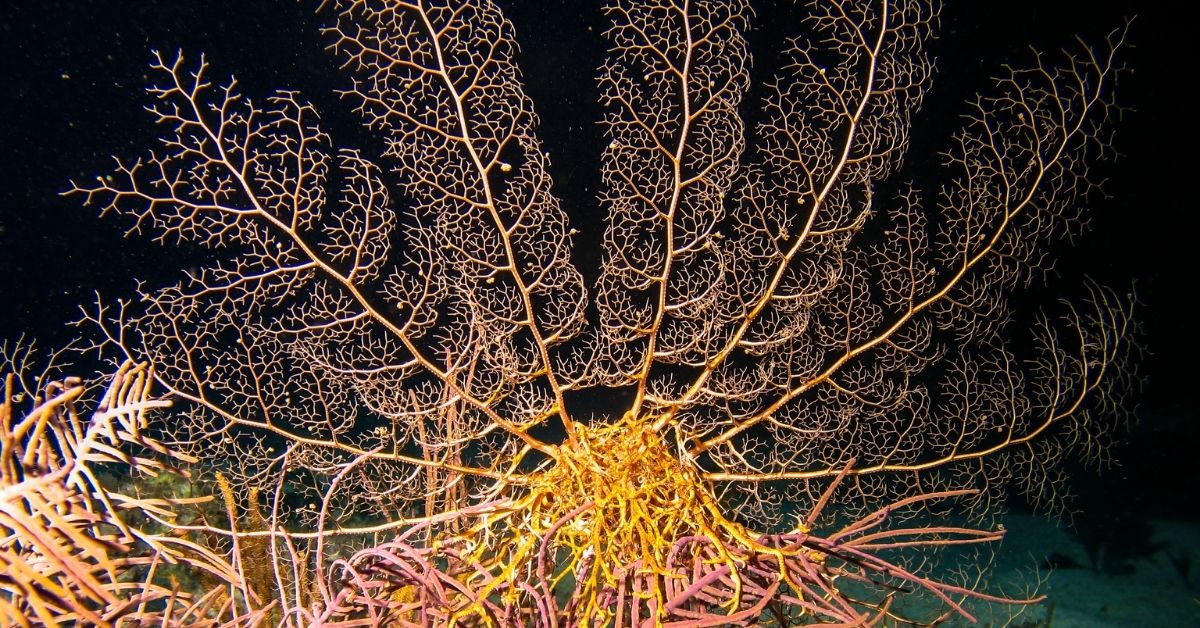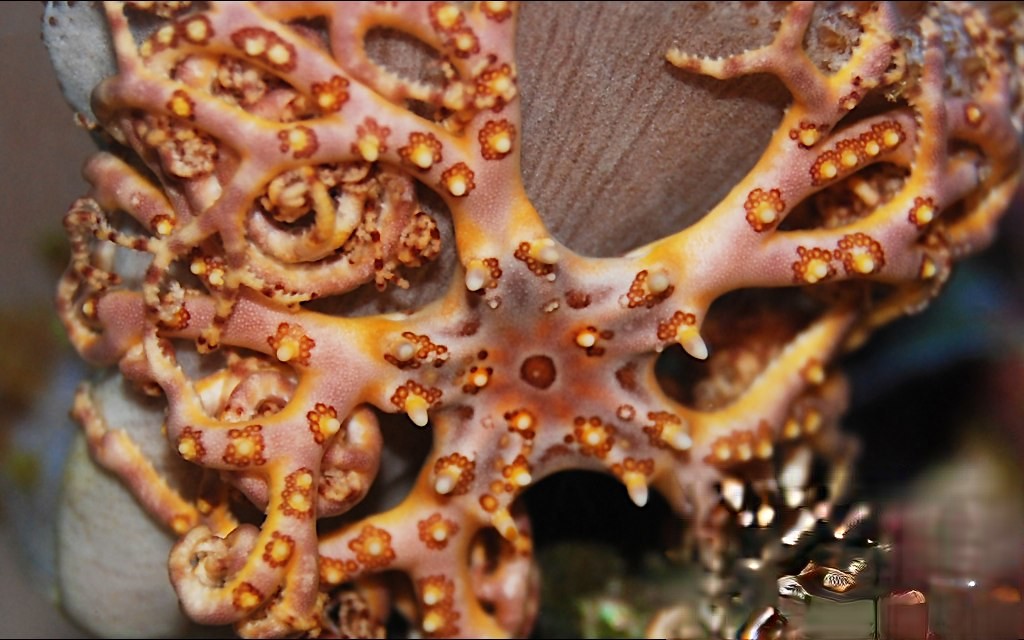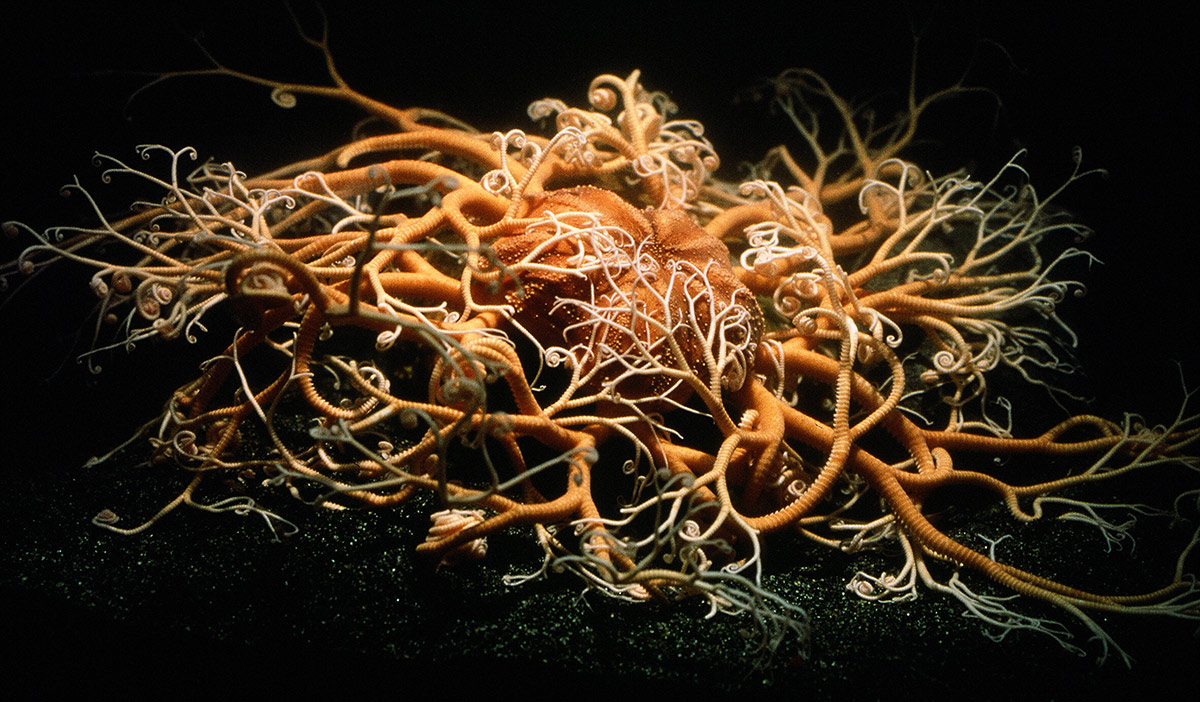Basket Starfish - A Creepy Deep-Sea Creature
The basket starfish is a sort of marine creature that is frequently discovered in the ocean's depths. It is also known by the name "Shetland Argus."
Author:Xander OddityReviewer:Dr. Felix ChaosphereOct 09, 202222 Shares389 Views

The basket starfishis a sort of marine creature that is frequently discovered in the ocean's depths. It is also known by the name "Shetland Argus."
They have massive "branches" for limbs that can grow to a length of up to 70 cm.
This characteristic branching of the arms is what gives them their star shape, which is how they got their name.
Some people refer to basket starfish, which are actually brittle stars, as basket-shaped brittle stars. Basket starfish are a form of starfish. Euryalina is the name given to the basket starfish by the scientific community.
The basket starfish is also known as the snake star, common basket star, brittlestar, and basket star. These are just a few of its many other popular names.
Echinoderms are the collective name for the group of creatures that includes the basket starfish.
Echinoderms are easy to spot because their bodies are symmetrical in five ways and their skeletons are often made of plates of calcium carbonate that make up their tough skin.
Basket Star Scientific Name
The scientific name of the Basket starfish is Gorgonocephalus arcticus.
When referring to starfish, the term "basket star" can be used to refer to any member of the family Gorgonocephalidae.
There are currently about 30 distinct species of basket stars that have been discovered and described. It's possible that there are other kinds of basket stars that haven't been identified yet.
Description
With a disk of up to 38 mm across, the basket star has a yellowish to brown tint. The disk has five pairs of radial ridges without any spines in between them.
The fact that their long arms extend from a central disk and that they can reach a size of up to 70 centimeters in arm's length alone despite having a body diameter of only 14 centimeters makes it necessary for them to have a home with a large tank.
The outer sections of the arms continuously branch off, creating a dense tangle.
It's been estimated that basket starfish can live up to 35 years when left to their own devices in the wild.
On the other hand, it appears that they do not live nearly as long in captivity as they do in the wild, likely due to the difficulty of maintaining them and the stringent requirements they have.
Distribution
From the Arctic to Cape Cod, basket stars can be found on a variety of bottoms at depths ranging from subtidal to more than 1200 meters.
Generally speaking, you can find basket starfish in the depths of the ocean and in locations such as Florida and the Caribbean.
However, they have also been discovered 15 meters below the surface of the water off the coast of South Africa.
They favor securing themselves to the seafloor by attaching themselves to rocks and using this method as a means of both concealment and protection.
They ambush their prey by extending their arms outward from their hiding spot and catching it while maintaining their balance atop the rock of their choice.
Locomotion
Basket stars primarily creep or cling to objects using their flexible, articulated arms for locomotion.
Due to the way their bones are set up, arms can move a lot "laterally," but they are rigid along the oral-aboral axis.
Tube feet lack suckers and ampullae, but their wall muscles are well-developed.
Gaseous Exchange
A basket star has ten bursae, which are body wall invaginations that open to the exterior through ciliated slits.
Between the bodily fluids and the moving water, gases are exchanged.
Interesting Facts About Basket Starfish
Even though they are related to starfish, basket starfish have a number of important features that set them apart from their relatives.
Branched Arms
Basket starfish have a large number of arms, but each arm also has a number of branches growing off of it.
The name of this species comes from the fact that it is capable of creating a web that resembles a basket in order to capture its victim.
Because of their ingenious design, they rarely find themselves in need of food.
How Do Basket Stars Eat?
To grab rather large swimming prey, basket stars use their suspension feeding technique (crustaceans and polychaetes). Arm and podia spines are used to do this.
Duck-basked stars emerge from hiding spots at night to take feeding positions, holding their branching arms in a fan-like formation in accordance with the ebb and flow of the tides.
Because of their unusual structure, basket starfish are able to capture prey in their webs, much like spiders, and then consume them after covering them in a protective covering.
Once the animal has caught its prey, it will usually cover it in mucus before eating it.
On the other hand, basket starfish do not merely place their prey directly into their mouths to consume it.
In point of fact, each of their arms contains five canals, and their mouths are located beneath their bodies.
They consume their food by first ejecting their organs, including their stomach, from their bodies and then consuming whatever they have caught.
Basket starfish are carnivores that will eat just about anything.
They also engage in cannibalism. They will figuratively consume practically everything that is placed in front of them.
Defense Mechanism
The structure of the basket starfish, which resembles an open basket, appears to make them vulnerable to attacks from fish and other critters that are on the lookout for food.
However, due to the ingenious design of these animals, they are able to wrap themselves into a tight ball, much as an armadillo would do.
This makes it significantly more difficult for a predator to get a bite on them.
They will also use this strategy when the current is strong so they don't have to be in the water as much and don't get swept away by it.
The basket starfish will be in a less dangerous situation if it can make itself smaller.
Are Basket Stars Dangerous?
Even if they don't have any harmful chemicals, brittle stars are not eaten because their skeletons are too hard.
Even though some species of brittlestar contain spines that are not pointed, none of them are known to be deadly or venomous.
Surfella asked the question, "I wonder if it can go flat like a regular starfish. How does it move along the bottom?"
As mentioned earlier, it moves through its articulated arms.
Another raised a good point, "There is just so much crazy stuff in the oceans that nothing surprises me anymore, I'm that old."
Yes, the ocean is a different world like it has biologically immortal jellyfishes, deep sea sharksthat look ALIENS from another planet, and whatnot.
People Also Ask
Are Basket Stars Alive?
Yes, basket stars are definitely alive. Although the majority of them reside in the deep sea or in waters that are cold, some basket stars can be seen in the shallow reefs of tropical waters at night.
What Do Basket Starfish Eat?
Small, razor-sharp hooks are embedded on each branch, allowing the animal to catch prey. It primarily eats zooplankton. Basket stars have the freakishly amazing ability to grow back their limbs if they are hurt or cut off by a predator.
Do Basket Stars Move?
Yes, they do move. Many brittle and basket stars propel themselves ahead with strong arm movements that raise their bodies. Slithering along the bottom are other species. Brittle stars can cling to rocks or coral above the ocean floor because they are skilled climbers. To flee from predators, brittle stars sever their arms or other body parts.
Conclusion
Fortunately, basket starfish are no longer endangered, despite the fact that other starfish species, such as sunflower starfish, have experienced a 90 percent population decline. They can, however, very easily pass away when kept in a home aquarium and are quite tough to care for.

Xander Oddity
Author
Xander Oddity, an eccentric and intrepid news reporter, is a master of unearthing the strange and bizarre. With an insatiable curiosity for the unconventional, Xander ventures into the depths of the unknown, fearlessly pursuing stories that defy conventional explanation. Armed with a vast reservoir of knowledge and experience in the realm of conspiracies, Xander is a seasoned investigator of the extraordinary.
Throughout his illustrious career, Xander has built a reputation for delving into the shadows of secrecy and unraveling the enigmatic. With an unyielding determination and an unwavering belief in the power of the bizarre, Xander strives to shed light on the unexplained and challenge the boundaries of conventional wisdom. In his pursuit of the truth, Xander continues to inspire others to question the world around them and embrace the unexpected.

Dr. Felix Chaosphere
Reviewer
Dr. Felix Chaosphere, a renowned and eccentric psychiatrist, is a master of unraveling the complexities of the human mind. With his wild and untamed hair, he embodies the essence of a brilliant but unconventional thinker. As a sexologist, he fearlessly delves into the depths of human desire and intimacy, unearthing hidden truths and challenging societal norms.
Beyond his professional expertise, Dr. Chaosphere is also a celebrated author, renowned for his provocative and thought-provoking literary works. His written words mirror the enigmatic nature of his persona, inviting readers to explore the labyrinthine corridors of the human psyche.
With his indomitable spirit and insatiable curiosity, Dr. Chaosphere continues to push boundaries, challenging society's preconceived notions and inspiring others to embrace their own inner tumult.
Latest Articles
Popular Articles


